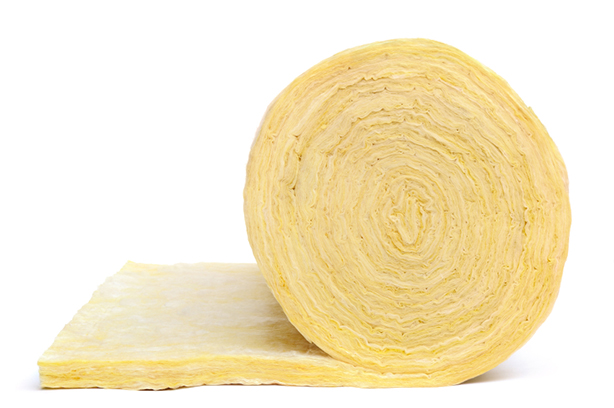
Fiberglass as we know it has been around since the early 1930s. It is a highly versatile product that can be made with virgin or recycled glass. Uses abound; you will find it in everything from home insulation to cars, surfboards and sporting equipment.
In the 80 years since Fiberglass was invented, however, only one company has come up with a way to recycle it. Unfortunately, its services are not very widespread, so what are the rest of us to do? In most cases, the answer is probably put it in the trash.
What is Fiberglass?
Fiberglass is just what it sounds like: a material made of thin glass fibers woven together. It is made up of silica, sand and other naturally occurring materials typically found in glass. There are several different types of Fiberglass, all of which are made with slightly different machinery. Each of those machines have one thing in common, though: They take molten glass and spin it into the material we use in our homes and businesses.
One of the main uses for Fiberglass is building insulation (although Fiberglass “wool” can also be used to line submarine bulkheads, the engine compartments in cars and air conditioners).
Fiberglass that is harder and resembles plastic can be used for boats, sports helmets, storage buildings and many other products. Surfboard manufacturers often combine a Fiberglass “cloth” with a resin to make their boards.
Benefits and disadvantages of Fiberglass
There are plenty of benefits to using Fiberglass. The material is very strong, lightweight and relatively inexpensive. It is not made of petrochemicals (like plastic) and will not corrode, even when exposed to salt water (like metal). Fiberglass insulation is water and fire resistant, good at absorbing sound and excellent at keeping your house cozy and warm.
Then there are the downsides. Most types of Fiberglass insulation contain formaldehyde, an extremely toxic chemical (although it is possible to get formaldehyde-free products from manufacturers like Johns Manville, or
JM). If that insulation winds up in a landfill the formaldehyde will leak out over time. Fiberglass must be handled carefully — all those tiny strands of glass can cause cuts and rashes. If you have to cut Fiberglass batts or use blown-in insulation, and you inhale those tiny glass particles on accident, they can cause health problems. It is very important to use proper safety equipment when working with Fiberglass, including gloves, long shirts and pants, goggles and a respirator.
How to recycle Fiberglass
For our purposes, the biggest problem with Fiberglass is that it is nearly impossible to recycle. Transfer stations and recycling centers will not accept it, and you cannot leave it at the curb.
American Fiber Green Products claims to be the only company in the U.S. that recycles Fiberglass. It is able to transform the product into what it calls “wood-substitute planks,” which are used to build picnic tables, fencing, sea walls and other items. AFGP’s website does not list locations where you can drop off used Fiberglass.
Here is one little fact that might make you feel better: The Fiberglass in your home is probably made with at least some recycled glass. According to the
North American Insulation Manufacturers Association, U.S. and Canadian manufacturers used almost 2 billion pounds of pre- and postconsumer recycled glass in their products in 2012.
Substitutes for Fiberglass insulation
There are plenty of alternatives to Fiberglass insulation that contain nearly 100% recycled material. They are also easier to work with and do not contain formaldehyde.
- Your ratty old denim jeans can be turned into insulation. Blue Jeans Go Green is one example of a company that makes insulation from cotton.
- Sheep’s wool does a great job of keeping animals cozy in all kinds of weather, and it can be used to keep your house warm as well. Good Shepherd Wool Insulation sells wool batts for framed houses and wool rope that fits the special needs of log homes. Bonus: Wool is a natural fire retardant, just like glass.
- Cellulose, or paper, can be turned into insulation as well. ThermoCell takes old newspaper, shreds it, and turns it into insulation. The company adds Borax, a nontoxic product, to help the insulation resist fire.
- The DIY site Instructables shares tips for using old Styrofoam blocks to insulate your home. Styrofoam is tough to recycle in many communities, so this is a great alternative for that material.
Can any of these products be recycled at the end of their usable life? No one is willing to say, although if those Styrofoam blocks are still in good condition, it stands to reason that they could go to a polystyrene recycler. And, given that they are made of polystyrene, a plastic that does not degrade, chances are they will still be in good shape after many, many years.
 Fiberglass as we know it has been around since the early 1930s. It is a highly versatile product that can be made with virgin or recycled glass. Uses abound; you will find it in everything from home insulation to cars, surfboards and sporting equipment.
In the 80 years since Fiberglass was invented, however, only one company has come up with a way to recycle it. Unfortunately, its services are not very widespread, so what are the rest of us to do? In most cases, the answer is probably put it in the trash.
Fiberglass as we know it has been around since the early 1930s. It is a highly versatile product that can be made with virgin or recycled glass. Uses abound; you will find it in everything from home insulation to cars, surfboards and sporting equipment.
In the 80 years since Fiberglass was invented, however, only one company has come up with a way to recycle it. Unfortunately, its services are not very widespread, so what are the rest of us to do? In most cases, the answer is probably put it in the trash.